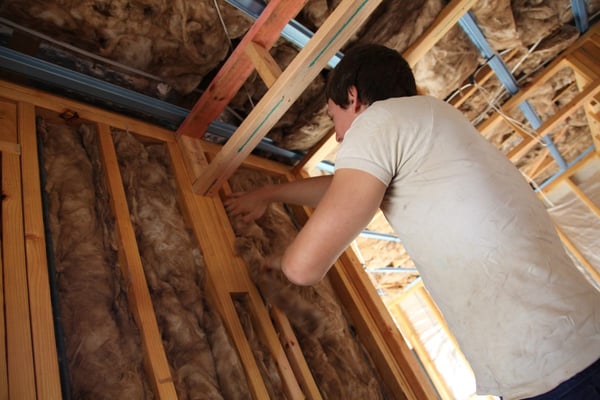Insulation is an important piece of every building and residential property constructed. It keeps buildings warm during cold months and cool during warm months and is a key part of how energy efficient a building or home is. There are a variety of types of insulation, ranging from traditional fiberglass to more eco-friendly solutions like wool. Here, we will highlight some of the more common types of insulation as well as pros and cons of each.
Blanket and Batt
Blanket and batt insulation are widely used types of insulation which come in pre-cut pieces of insulation that fit standard construction techniques. Materials can be fiberglass, cellulose, wool, cotton and hemp. Pros are these types of insulation can be cost effective, easy to install, and optional facing supports a vapor barrier. Cons are that glass fibers can irritate the lungs, eyes and skin. If the installation is poor, then performance suffers, and it is possible for heat conduction through structural elements.
Blown Insulation
Blown insulation, also sometimes called loose-fill insulation, is the process of filling stud or joist cavities or covering attic floors with any loose material that has a high R-value. This type of insulation offers easy installation and flexibility because its small particles can fill existing walls with minimal intrusion and the particles can conform to any space. Common materials are fiberglass and cellulose. Pros are that it is the least expensive insulation choice, it easily fills around pipes and duct work and it can be re-used by collecting it with a vacuum and relocating it. Cons are that with fiberglass the dust can irritate the lungs, eyes and skin, the weight of cellulose can be too much for certain ceiling construction styles, and it can hold enough moisture to cause performance and mold problems.
Spray Foam
Spray foam is an insulating air barrier material that seals walls, floors, and ceiling cavities from air flow. It typically performs better than any other insulation product because it essentially stops air movement. There are two types, open-cell where bubbles that burst expand to fill any cavity (lower R-value) and closed-cell which retains bubble integrity and creates a complete seal. Material is all chemical, either MDI and pMDI, or a blend of polyols, blowing agents, catalysts, flame retardants and surfactants. Pros are that it eliminates the need for a separate vapor barrier (as long as you use closed-cell), it reduces sound transmission, it has the highest R-value density and can be applied to any surface. Cons include cost, it requires a specialized subcontractor with specific training and experience to install, installation is messy and leaks will come through unsealed joints and openings, and the installation produces toxic gasses.
Rigid Foam
Rigid foam has the performance of foam and is easy to install. Its R-value density and rating comes close to spray foam levels and all rigid foam is moisture-resistant, doesn’t change dimensions, split or crack. Extruded foam sheets stand up to exterior exposure as well. Materials include polyisocyanurate, extruded polystyrene and expanded polystyrene. Pros are that it’s the only type of insulation that blocks thermal conduction through structural elements, it’s mid-priced and doesn’t require special equipment or extra protection for workers. Cons are that it must be cut to fit around wiring and pipes and the cuts must be sealed to make it air-tight, it can’t be used for structural elements and must be covered with drywall in living spaces.
Reflective Insulation
Reflective insulation is designed to reduce heat transfer through radiation by reflecting it away and using an air gap. The reflective surface, usually foil, reflects most of the thermal radiation toward the air space and prevents it from being absorbed. Essentially, it blocks radiant heat transmission. Most reflective insulation is aluminum foil on the surface with rigid foam, plastic film, polyethylene bubbles or cardboard as a backing. Pros are that it is simple to install, provides a vapor barrier, does not deteriorate or compress and is best used in warm climates to reflect the heat. Itis also good for wrapping pipes and ductwork. Cons are that in cold climates, it can’t be the only insulation used and dirt build-up reduces performance.
As you can see, there are several different materials inside these five types of insulation. Eco-friendly solutions include cellulose, cotton, spray foam, hemp and wool, while the most traditional material is fiberglass. Some insulation requires the removal of drywall, so it may be better suited for a new build or renovation project, while others are less invasive and may prove more useful in existing structures. Be sure to research what materials are most effective for the climate you build in before you select your insulation material, and look at the effectiveness and R-value scores of each.

Recent Posts
- Spec Home Loans: Complete Guide to Construction Financing for Builders
- Spec Construction Loans: A Spec Line of Credit Is Worth the Paperwork
- Spec Homes and Pre-Sale Homes: Relative Benefits for a Spec Builder
- Spec Construction Success: Insights for the Investor Builder
- How Is a Spec House Different From Other Kinds of House Construction?
